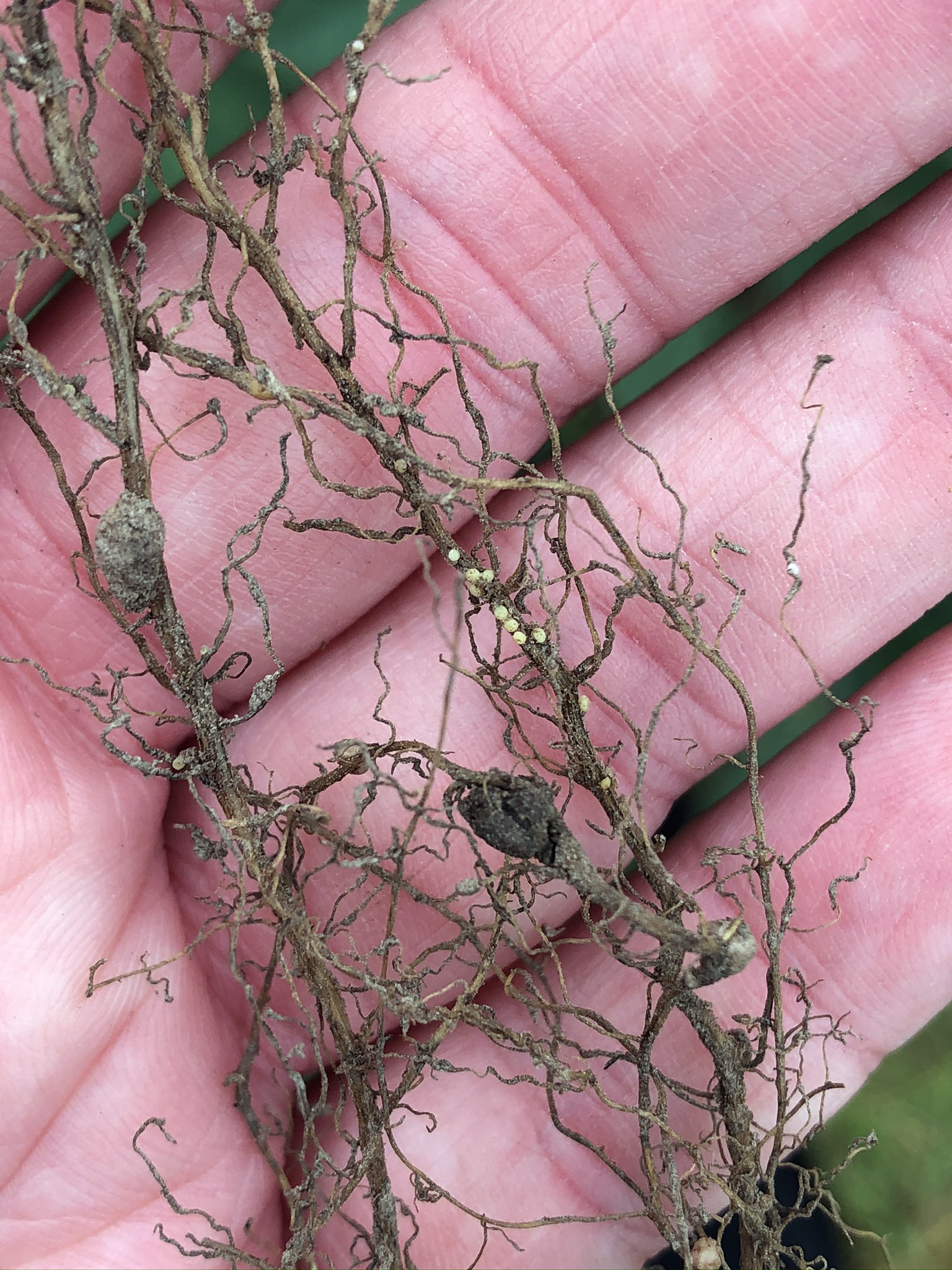Time to test fields for soybean cyst nematode

COLUMBIA, Mo. — Right after soybean harvest is the time to test fields for soybean cyst nematode, the No. 1 pathogen of soybean in the United States.
Sampling in soybean stubble in 2022 can help with 2023 planting decisions, says Mandy Bish, University of Missouri Extension specialist and interim director of the SCN Diagnostics clinic, which can provide farmers with four free SCN egg count tests this fall. SCN Diagnostics, Missouri Soybean Merchandising Council and the SCN Coalition support the free tests.
SCN appears in the roots of plants, and symptoms are often difficult to see with the naked eye, so infected fields may look healthy above ground. A soil sample will help determine its presence and level of infection.
To determine if SCN is present, collect soil samples in:
- Fields sampled more than three to five years ago.
- Fields with known SCN populations.
- Fields with a history of sudden death syndrome of soybean.
- Fields where soybean are not rotated with corn.
Sampling for SCN is a little different than sampling for other purposes, says Bish. Recommended soil cores are one inch in diameter by eight inches deep.
For more than three decades, growers have relied on a soybean breeding line called PI 88788 as the main defense against SCN. Juvenile nematodes feed on roots of PI 88788 plants, which impede their maturation into adult female SCN, stopping egg production. But recent work by MU soybean research teams found that some juvenile nematodes can feed on PI 88788 soybean and still mature into adult females.
“Thirty years is a long time to rely on one management tactic,” said Bish in a press release.
The SCN Coalition (www.thescncoalition.com) recommends four ways to manage SCN:
- Test fields to “know your numbers.”
- Rotate resistant varieties.
- Rotate to nonhost crops.
- Consider using a nematode-protectant seed treatment.
Sampling can be frustrating because nematodes do not appear uniformly in fields, Bish says. The SCN Coalition makes these recommendations for sampling:
Divide fields into sections of 10-20 acres using natural boundaries such as different topographies, areas where sudden death syndrome or SCN symptoms appeared previously, and low-yielding areas of the field.
Collect 15-20 soil cores from each section of the field. Collect in a zigzag pattern. Dig cores one inch in diameter and and eight inches deep. Mix the cores together and put in a sample bag.
Submit samples for each section separately to SCN Diagnostics. Download the sample submission form at scndiagnostics.com/links/sample_submission_form.pdf. Contact the clinic at scndiagnostics@missouri.edu for more information. For more detailed sampling instructions, go to bit.ly/3B4PcrY (PDF).
SCN Diagnostics is a partnership with the University of Missouri and MU’s College of Agriculture, Food and Natural Resources.
Also see the MU Extension publication “Soybean Cyst Nematode: Diagnosis and Management” at extension.missouri.edu/g4450.
Bish and other MU researchers continue to study how in-season management practices influence SCN levels. Learn about their recent research at ipm.missouri.edu/cropPest/2022/9/scn-MB.
Miss Clipping Out Stories to Save for Later?
Click the Purchase Story button below to order a print of this story. We will print it for you on matte photo paper to keep forever.

